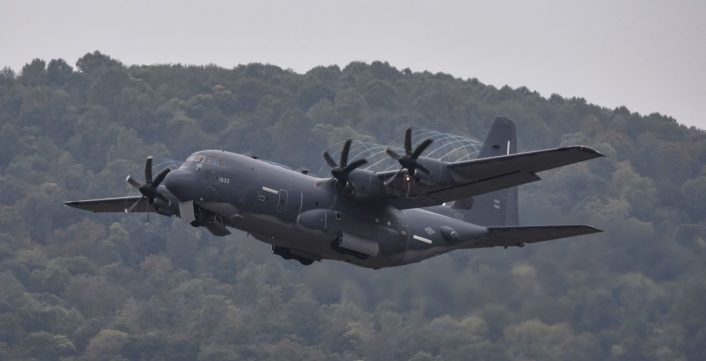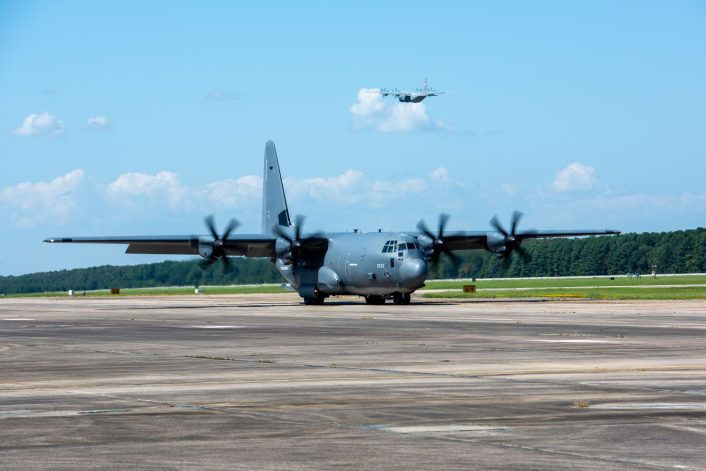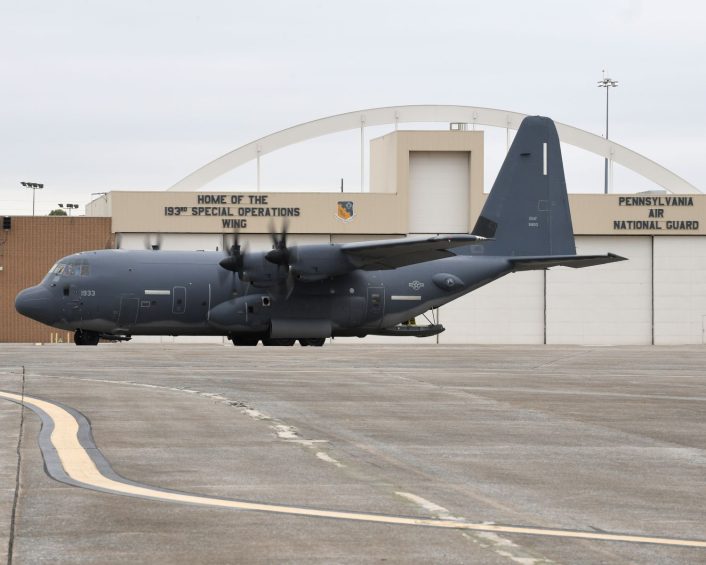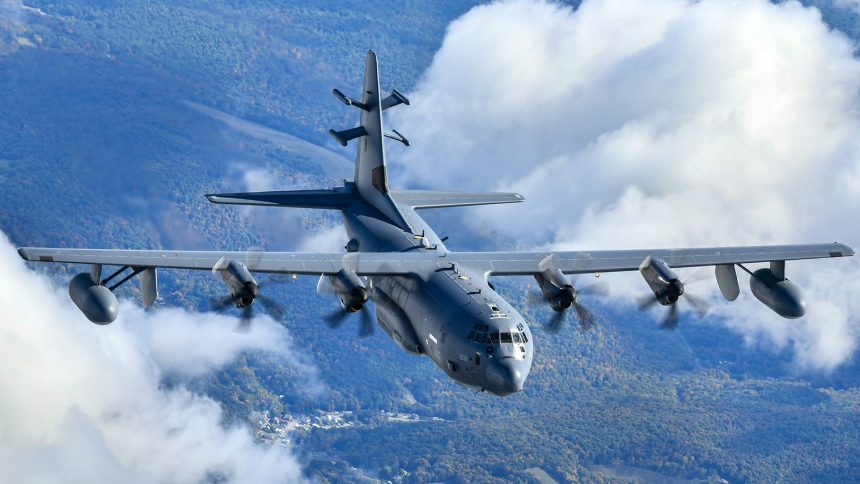The last two airplanes, tail numbers 96-8153 and 99-1933, were previous EC-130Js and converted to “slick” C-130Js. The 193rd SOW becomes the Air National Guard’s first MC-130J unit while the 189th AW begins their transition to the C-130J.
On Sept. 18, 2024, the Pennsylvania Air National Guard’s 193rd Special Operations Wing said goodbye to their one-of-a-kind EC-130J Commando Solo III electronic warfare airplanes.
The last two airplanes, tail numbers 96-8153 and 99-1933, were previous EC-130Js and converted to “slick” C-130Js. The aircraft took off from their home airport of Harrisburg International (KMDT) and headed for Little Rock AFB, Arkansas. On their way out, 99-1933, flying as HAVOC 99, performed a few fly-bys for members of the Wing and the airport they’ve called home for over twenty years. The other, callsign HAVOC 98, worked the pattern in Lancaster, Pennsylvania, before the two airplanes traveled to their new home together.

The EC-130E and J, both historically operated by the 193rd Special Operations Wing, were Air Force Special Operations Command platforms primarily used for broadcast and psychological warfare operations (PSYOPS), able to broadcast messages on AM, FM, HF, and TV waves. The airplanes saw use during Operations Urgent Fury, Just Cause, Desert Storm, Iraqi Freedom, Enduring Freedom, Unified Protector and Inherent Resolve, among many others. The airplane was also used for humanitarian missions, such as after the 2010 Haiti earthquake, in which it was used to broadcast warnings and instructions to civilians below. The EC-130J broadcasted its final message at the Lancaster Airport Community Days airshow in 2022. The airplanes were easily recognizable by their large, X-shaped antennas located on the tail.
“The EC-130J’s role was to conduct airborne information operations via digital and analog radio and TV broadcasts. It has been replaced with the MC-130J Commando II mission, which flies clandestine – or low visibility – single or multi-ship, low-level infiltration, exfiltration and resupply of special operations forces, by airdrop or airland and air refueling missions for special operations helicopters and tiltrotor aircraft, intruding politically sensitive or hostile territories,” the 193rd said in a press release.
And from the Air Force’s official fact sheet on the EC-130J – “Many modifications were made to the basic C-130J to create the EC-130, including enhanced navigation systems, self-protection equipment and air refueling. The majority of the engineering investment went into the integration of the special mission equipment capable of up to 14 simultaneous broadcasts with the same or independent messages on each channel. Keeping pace with information-technology systems, message playback is accomplished using media stored digitally, e.g. hard drives, but the aircraft is still capable of accepting legacy media formats (CD/DVD etc.). In addition to pre-recorded messages, the EC-130J has the capability to conduct live broadcasts. In the last two deployments, the live broadcast option has gained considerable popularity. In its current configuration, the EC-130J is capable of a broad-range of tactics including; Information Operations (Influence) and Joint Electromagnetic Spectrum Operations, i.e. electronic attack.”

The 193rd Special Operations Wing was the U.S. Air Force’s sole operator of the EC-130J. The only other EC-130 operator, the 55th Electronic Combat Group at Davis-Monthan AFB, Arizona, is in the process of replacing their EC-130H Compass Call aircraft with brand-new Gulfstream EA-37B Compass Call II (or “Banshee”) jets.
On their website, the 193rd Special Operations Wing cites challenges finding replacement parts and a changing battlespace as reasons for the transition. “Although effective in the past, it may no longer be the primary way an intended audience gets its messaging,” they state. The Wing also announced a decrease in flight operations with the newer MC-130Js, going from around eleven flights a week to six. The 193rd received their first MC-130J in August, 2023.
The retirement of older weapons systems like the EC-130H and J are part of an effort by the U.S. Department of Defense to shift from a counter-insurgency fight (like the War on Terror) to a near-peer fight (with a focus on China and Russia). The force modernization also includes moves like retiring (or selling?) the A-10 Thunderbolt II, F-15C/D Eagle, and a large percentage of other fleets to make way for newer platforms like the F-15EX Eagle II and F-35A Lightning II.
Both of the former EC-130Js were gained by the Arkansas Air National Guard’s 189th Airlift Wing as they begin their conversion from the C-130H to the C-130J. Interestingly, the former-193rd airplanes still bear their Air Force Special Operations Command dark-gray paint scheme and their air-to-air refueling receptacles, something not found on standard C-130J models. One can assume the receptacles will go unused. The 189th Airlift Wing also confirmed that the Wing will continue C-130H training. “The arrival marks a major step towards fleet modernization for the Air National Guard to retain rapid global mobility with its primary combat delivery aircraft,” the 189th said in their press release.

Little Rock AFB, Arkansas, is home to the Air National Guard’s 189th Airlift Wing, the active duty 19th and 314th Airlift Wings, and the Air Force Reserve’s 913th Airlift Group, an associate unit of the 19th AW. The 189th and 314th are tasked with training all of the Department of Defense’s C-130 crews, from the Air Force to the Marine Corps. The base has the largest fleet of C-130 airlifters in the world. Little Rock is also home to the C-130 Weapons School under the 29th Weapons Squadron.
With the schoolhouse themselves starting the transition to the C-130J, the days of the venerable H-models are numbered. Only a handful of Air National Guard and Air Force Reserve units still fly it, with many of them now sporting new eight-bladed engines. The sounds and sights of the Rolls Royce (Allison) T56-powered Hercules airlifters will be missed.









